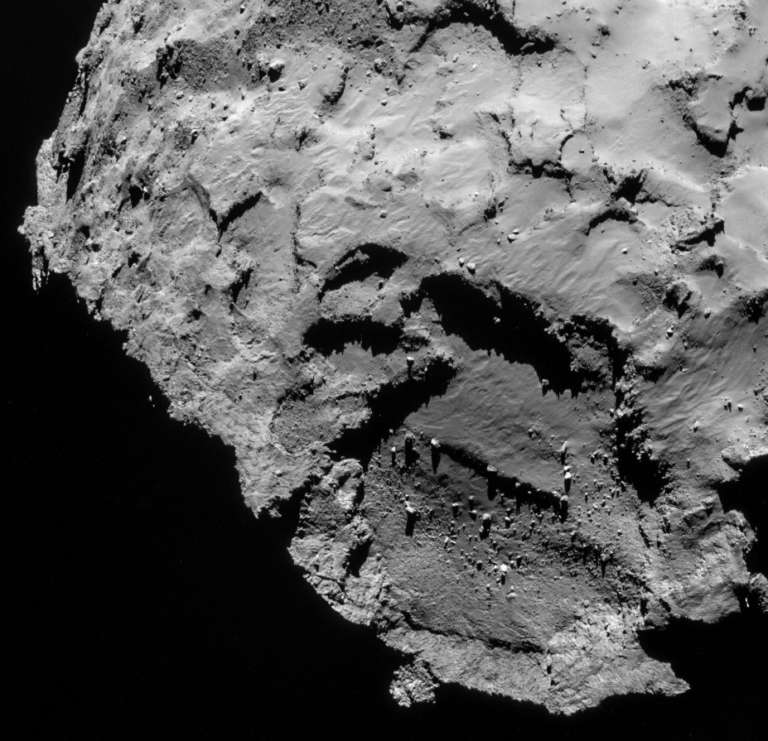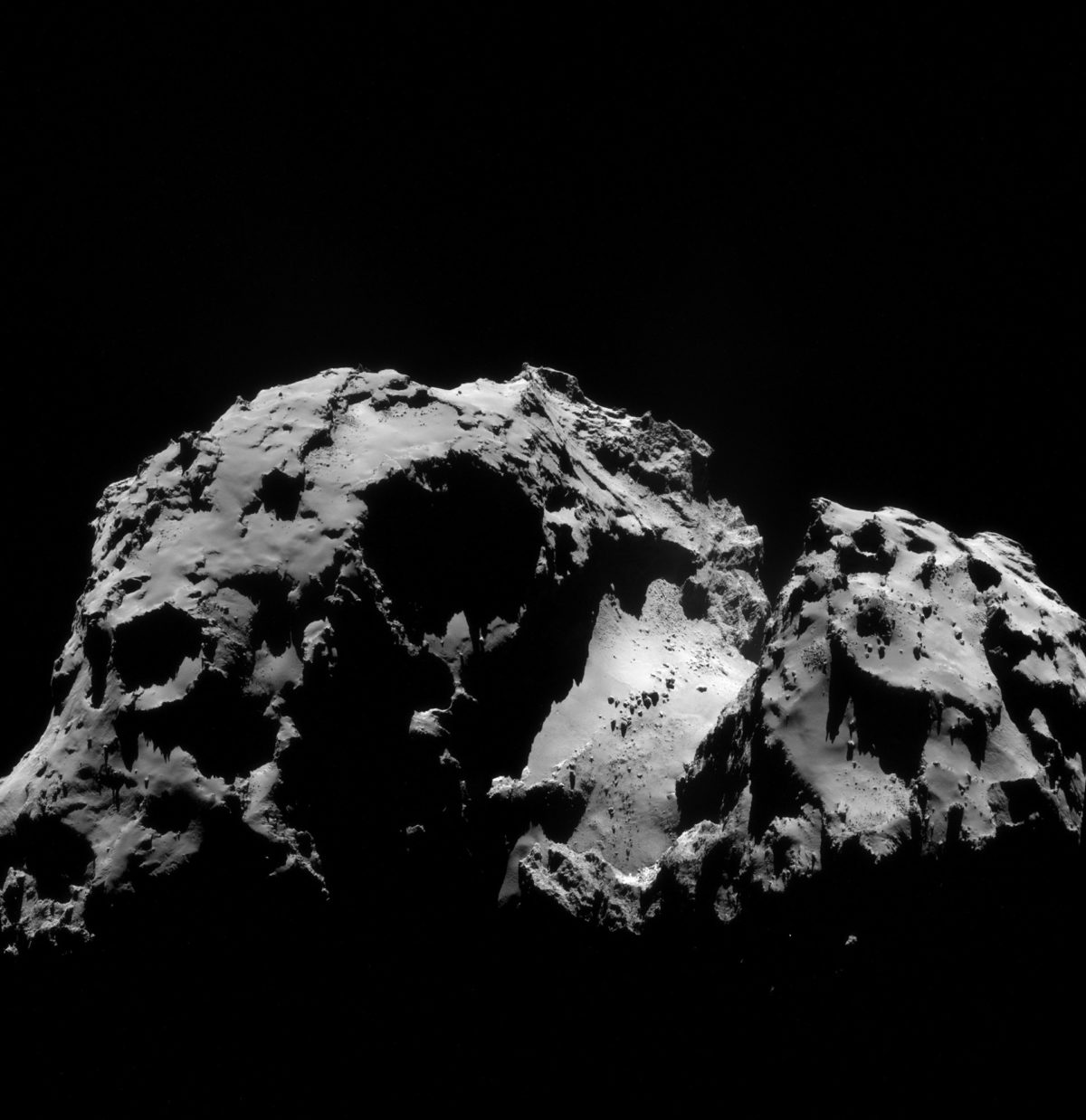Emily Lakdawalla • Sep 26, 2014
Philae's landing day announced as Rosetta swings to comet's dark side
ESA announced today that Philae will be landing on November 12, 2014. What time the landing occurs depends on which landing site they use. If they go to the prime landing site, "site J," Earth should receive word of the successful landing at 16:00 UTC (08:00 PST). If they go to the backup site, "site C," news will reach Earth at about 17:30 UTC (09:30 PST). Mark your calendars! The final choice of landing site will happen on October 14. Here is a little more detail on the timing of landing for different sites:
For the primary landing scenario, targeting Site J, Rosetta will release Philae at 08:35 GMT/09:35 CET at a distance of 22.5 km from the centre of the comet, landing about seven hours later. The one-way signal travel time between Rosetta and Earth on 12 November is 28 minutes 20 seconds, meaning that confirmation of the landing will arrive at Earth ground stations at around 16:00 GMT/17:00 CET.
If a decision is made to use the backup Site C, separation will occur at 13:04 GMT/14:04 CET, 12.5 km from the centre of the comet. Landing will occur about four hours later, with confirmation on Earth at around 17:30 GMT/18:30 CET. The timings are subject to uncertainties of several minutes.
This landing happens exactly in the middle of the weeklong, annual Division for Planetary Sciences meeting, to be held this year in Tucson, Arizona. So I'm incredibly torn about which one to attend. DPS would be a right old comet party. But in Darmstadt I'd witness history in the making. I'm considering my options, including cloning. In the meantime, here's a lovely new Navcam photo of site J. It does look relatively boulder-free compared to other areas of the comet, but there are those worrying scarps....

Some other news from the ESA blog: Rosetta has nearly completed its global mapping phase and has now begun the very last step, the so-called "night excursion," when it shifts its path to one that views the comet from a perspective over its nighttime hemisphere (hemiduck? hemicapybara?). The night excursion lasts from September 24 to 29, and at the end of it Rosetta will be at an altitude of only 20 kilometers. On Monday, September 29, Rosetta will perform a maneuver that ends its descent, fixing it in a 20-kilometer orbit along the plane of the terminator.
And they have posted another new set of NavCam images. This time, when they shared the component frames, they went ahead and performed dark-frame subtraction to correct the vertical striping I discussed in my previous post. But when I peered into the shadows of those images, I found that the correction had gone a bit too far; the vertical stripes had reversed to being darker than the rest of the sky, and there was a loss of detail in the coma and in the shadowed regions of the comet that are dimly lit by reflected sunlight. I mentioned this to Fred Jansen on Twitter, and he kindly shared with me the uncorrected NavCam frames, on the condition that I share them with everyone else, which I am delighted to do: Frame A, Frame B, Frame C, Frame D. And while I'm at it, here's another link to the dark frame I developed for cleaning up these photos.
Here is the composite of the four. The ever-more-dramatic lighting really emphasizes the jagged nature of the boulders and scarps. Site C appears like a gaping circular maw in the center of the photo.

And, for fun, a look at what happens when you stretch the heck out of this image. The jets are not as prominent as I would have expected -- I couldn't begin to explain why. There is a good amount of detail visible in the shadowed regions of the neck area of the comet, which is dimly lit by sunlight reflected off of other parts of the comet. Just think -- if you were standing in any spot where you can see that dim illumination, some sunlit face of the comet would looming well above your horizon, perhaps even over your head. What crazy geography!
Support our core enterprises
Your support powers our mission to explore worlds, find life, and defend Earth. You make all the difference when you make a gift. Give today!
Donate

 Explore Worlds
Explore Worlds Find Life
Find Life Defend Earth
Defend Earth


